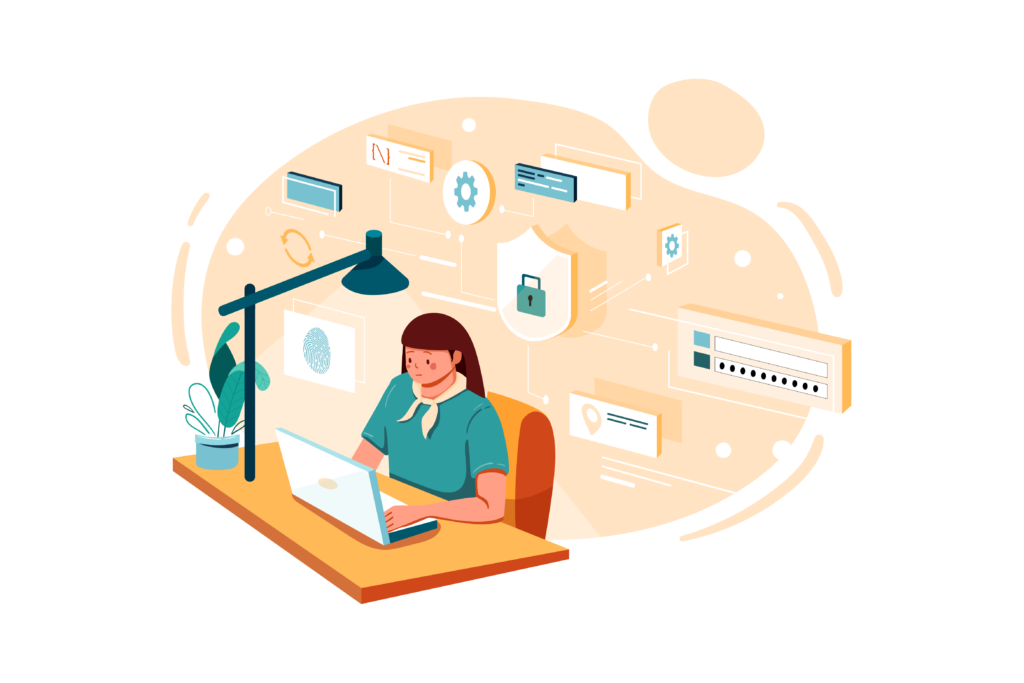Make protecting your company's data your daily business
Knowledge and data can be a competitive advantage unlike any other. If your organization knows more or has access to better data than your competitors, you could be thriving sooner rather than later. Since knowledge and data give us an advantage, we should protect them.
Historically, this was straightforward. You had an office with files. In your file room, you could lock the door or even put ultra-sensitive files in a safe. If you wanted to transfer those files to another department, you could send a fax or hand-deliver them yourself. All this ensured the utmost security, and if any documents went missing, you would know because they wouldn’t be where they were supposed to be. Fast forward to today, and information is everywhere. Employees have documents on their computers and shared servers. Meeting notes and agendas are scattered throughout email threads. So how do we keep this secure?
Tip 1: Take advantage of security automation
At first, this tip might appear too simplistic. For example, how can we automate security if we don’t know where the threats are coming from? Well, that’s the caveat, we aren’t automating the patches or fixes that we make when we have data breaches. Instead, we are using the historical knowledge of previous breaches to proactively discover new threats.
With next-generation analysis tools that can alert admins of suspicious activities, employees can spend less time monitoring and more time proactively creating solutions that help thwart threats before they arrive.
Tip 2: Get a bird’s eye view of your security posture
As a security administrator, are you up to date on all the different apps and devices your organization uses? Do you know where the threats are coming from? Since workers are now using more devices than ever, accessing information is easier, but protecting the information is much more difficult than before.
A security dashboard could be a solution here. Google offers one to all of its Workspace customers. A dashboard can act as a watchtower, providing security admins with insights into all of their employees’ devices. The dashboard also shows warnings about potential threats, updates to security effectiveness, and recommendations on improving.
Tip 3: Stop relying on passwords alone
Do you use the same password for all your accounts? Probably not a good idea, but this is common and can cause nightmares for security admins across all industries.
Adding an extra layer of protection with multi-factor authentication requires people to sign in with their password and something else they have, like their phone. Administrators can take this one step further by giving users security keys. Security keys are physical authentication tokens that connect to computers and other devices.
Tip 4: Change the locks when employees leave
Everyone talks about onboarding, but what about offboarding? 36% of US employees participate in the gig economy 52. The days of staying at one organization for your entire career are long gone. Organizations need to prioritize offboarding security so that former employees don’t leave with their compensation and corporate secrets.
Security teams can do this by taking advantage of cloud services and discouraging the use of local devices for storage. When an employee leaves, the security or IT team can easily disable their access to cloud information and remove any sensitive company info from their devices.
Tip 5: Safeguard private information
The total amount of data in the world is growing by 61% annually. This means companies have more data than ever, and that amount of data continues to increase daily. Much of this data is protected and confidential.
Companies should implement data loss prevention systems to scan email traffic and shared files for sensitive information if they haven't already. This will reduce the risk involved with having employees across many devices. After this, you should create rules to trigger automatic actions when detections occur.
Security is now, not the future or the past
IT departments across all sectors need to keep their security systems and processes up to date and active. Google has provided us with some useful tips we covered in this post, but the buck should not stop here. As hackers continue to innovate and develop new strategies to exploit security vulnerabilities, admins need to stay on their toes to actively improve their systems and processes.
Your partner for the Google Workspace and Google Cloud solutions
Are you interested in modern collaboration in your company using Google software as an alternative to MS Office? Get in touch if you have any questions or would like to find out more: We are an official Google Cloud Partner and would be happy to give you no-strings advice on the implementation, licensing, and productive use of Google Workspace!
Curious about how Google can help you? Test Google Workspace free for 30 days!
Further Reading
- Google Cloud: The role of technology in environmental sustainability and why it matters.
- 5 Core business benefits of Google Workspace
Learn more about Creative Commons licensing and //Seibert/Media




